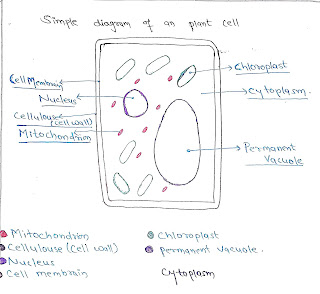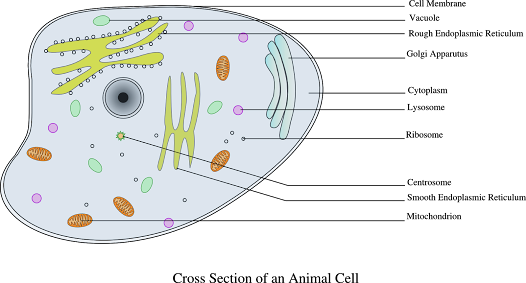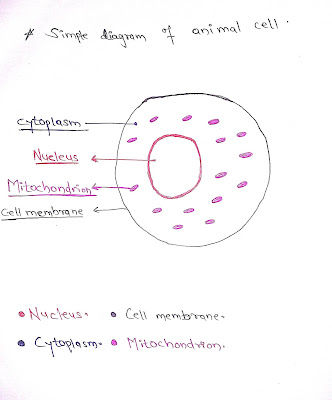The Cell.
• What is a cell?
• How is a cell made? &
• What is a cell made of?
• What are the major types of cell design?
• What are the function of cells? & What is the importance of cells in the human body?
• What is an organelle?
• How animals cell is different from Plant cell?
As we all know that
A cell is the very smallest unit of life.
A cell is defined as the smallest and basic unit of life.
That is responsible for all of life's processes.
The basic structural, functional, and biological unit of all organisms is known as Cell.
The building blocks of life is known as Cell.
The study of cells is named cell biology, cellular biology, or cytology.
How is a cell made? & What is a cell made of?
A cell can replicate itself independently. Hence, they're referred to as the building blocks of life.
• New cells are created from existing cells through a process referred to as the cell cycle.
• One cell can make a copy of itself and form two new daughter cells.
• This happens during mitosis or the M phase of the cell cycle.
• During mitosis, cells build a molecular machine, which is known as the mitotic spindle.
All cells are made from the same major classes of organic molecules and they are
• Nucleic acids,
• Proteins,
• Carbohydrates, and
• Lipids.
What are the major types of cell design?
Do you know?
There are two major types of cell design and They are the basic types of biological cells.
Are they:-
• Prokaryotic cell. &
• Eukaryotic cell.
Eukaryotic, which contain a nucleus inside
&
Prokaryotic, which do not contain a nucleus inside
Because the reason is
Prokaryotes are single-celled organisms, while on the other side
Eukaryotes can be either single-celled or multicellular. It can be both
Let's see what are the function of cells? & What is the importance of cells in the human body?
As we all know that Cells are the basic building blocks of all living things. Just like plant & animals
The physical body consists of trillions of cells.
They provide structure for the body, absorb nutrients from food, convert those nutrients into energy, and perform specialized functions.
Cells group together to form tissues.
which in turn group together to form organs. such as the heart and brain
And then the group of organs makes an organ system introduce organisms.
Let's see the structure of cell?
A cell consists of three parts:
the cell membrane,
the nucleus, and, between the two,
the cytoplasm.
But within the cytoplasm complex arrangements of fine fibers and hundreds or even thousands of minuscule but distinct structures called organelles.
All of the organelles in eukaryotic cells, like the nucleus, endoplasmic reticulum, and mitochondria, are located within the cytoplasm.
But the portion of the cytoplasm that is not contained in the organelles is called the cytosol.
But now you are thinking about what is an organelle?
An organelle is a subcellular structure that has one or more than one specific job to perform in the cell.
Just like an organ does in the body to do a job.
Among the more important cell organelles are the
Nuclei, which store genetic information that means DNA,
Mitochondria, which produce chemical energy. &
Ribosomes, which assemble proteins.
Now let's see how animals cell is different from Plant cell?
In plants, there is the cell membrane and cell wall both are present, but in animal, the cell wall is not present only cell membrane is present this make a big difference in between them.
 |
| Plant cell |
Both animal and plant cells have mitochondria, but only plant cells have chloroplasts.
Animal cells shape and sizes vary greatly from irregular shapes to round shapes, most defined by the function they perform but
Plant cells similar in shape with most cells being rectangular or cube-shaped.
Animal cells are eukaryotic cells that have both a membrane-bound nucleus and other membrane-bound organelles.
These organelles carry out specific functions that are needed for the normal functioning of the cell.
Plant and animal cells are similar in that they are both eukaryotic and have similar types of organelles.
Plant cells tend to possess more uniform sizes than animal cells.
Animals typically contain trillions of cells. Humans, for example, also have hundreds of different cell types. The shape, size, and structure of cells go alongside their specific function



Post a Comment
Post a Comment